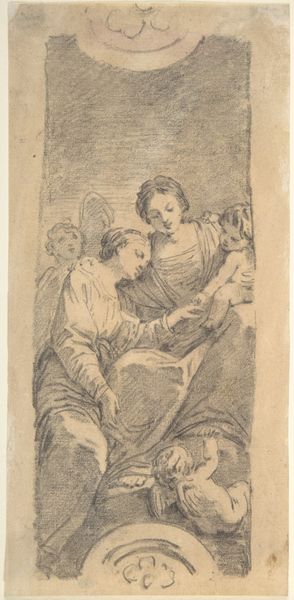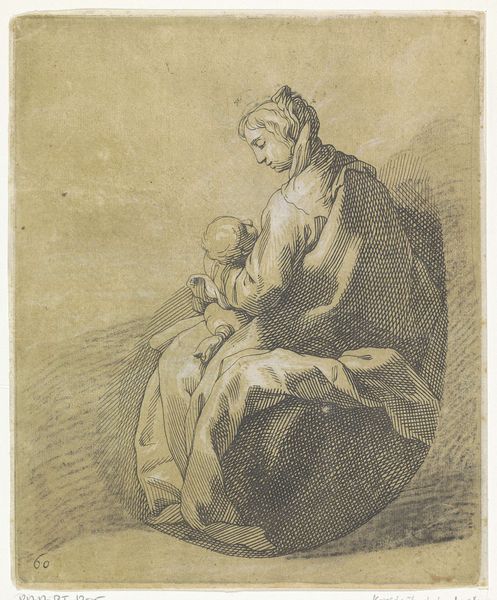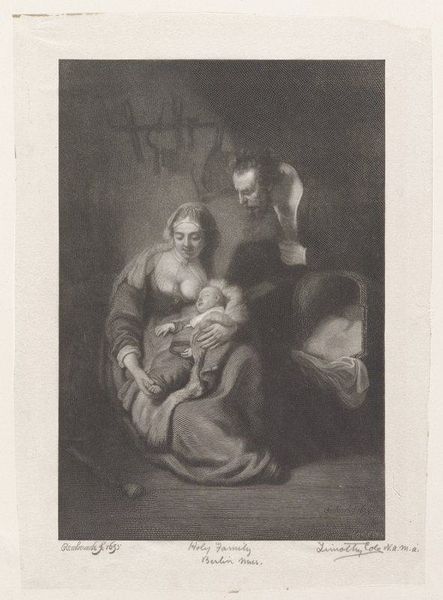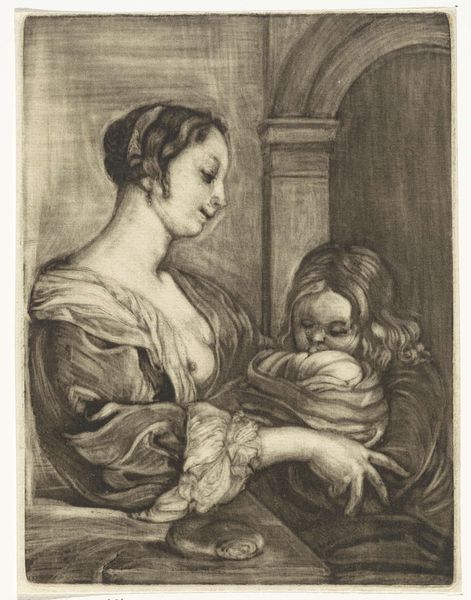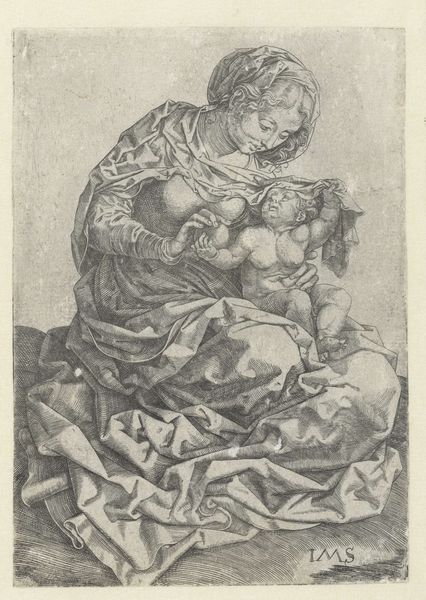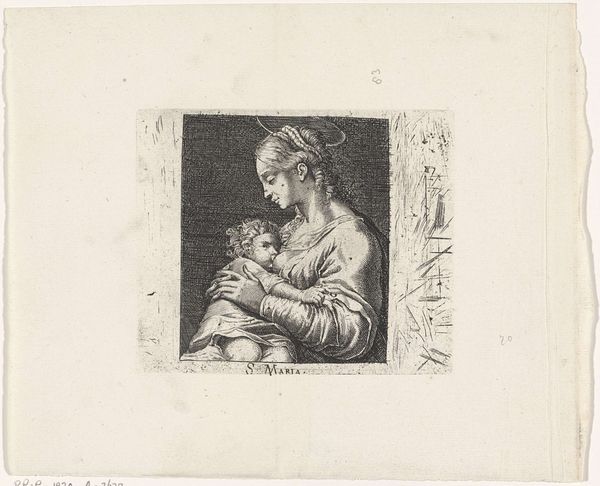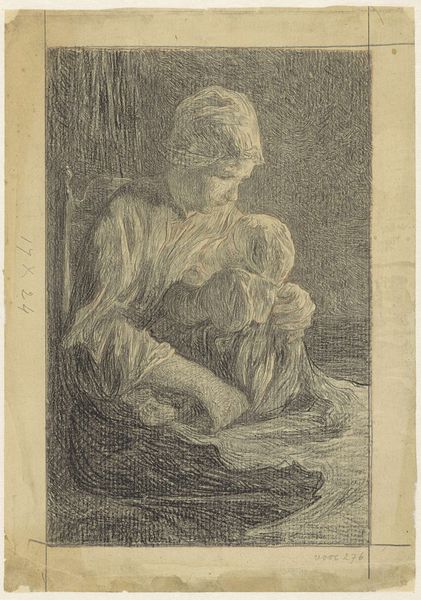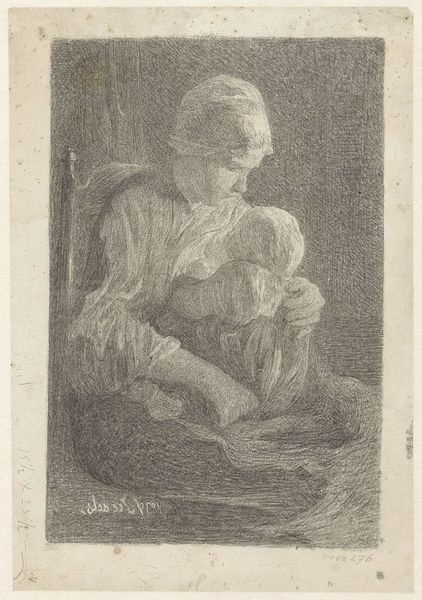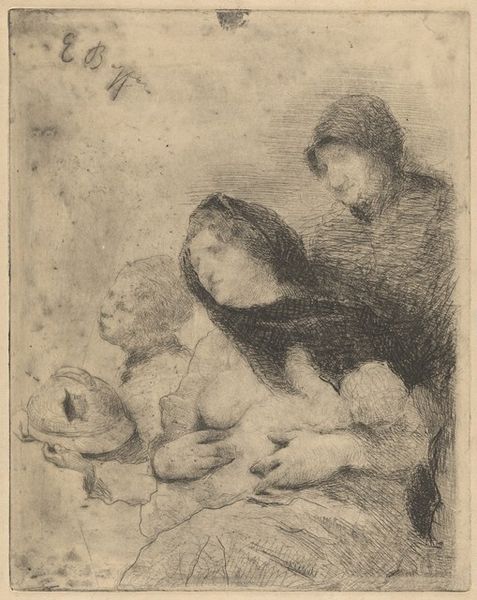
drawing, graphite
#
portrait
#
drawing
#
narrative-art
#
dutch-golden-age
#
figuration
#
graphite
#
genre-painting
Dimensions: height 134 mm, width 114 mm
Copyright: Rijks Museum: Open Domain
Cornelis Dusart made this print of a mother and child in the Netherlands, sometime in the late 17th century. Look closely, and you'll see that it is not a drawing, but a print, likely made with a technique called mezzotint, which was quite new at the time. The artist would have used a tool called a rocker to create a dense field of tiny dots on a copper plate. This painstaking process created a surface that would print as solid black. The image was then produced by gradually burnishing areas of the plate smooth, so they would hold less ink. The velvety tones that Dusart achieved are characteristic of this technique, which was perfectly suited to depicting subtle gradations of light and shadow. But beyond the remarkable skill involved, we might also consider the social context. The print medium was ideally suited to broad distribution, making images accessible to a wide audience. The intimate image of a mother and child connects to the traditions of painting, while being radically different in its mode of production, and potential viewership.
Comments
No comments
Be the first to comment and join the conversation on the ultimate creative platform.
